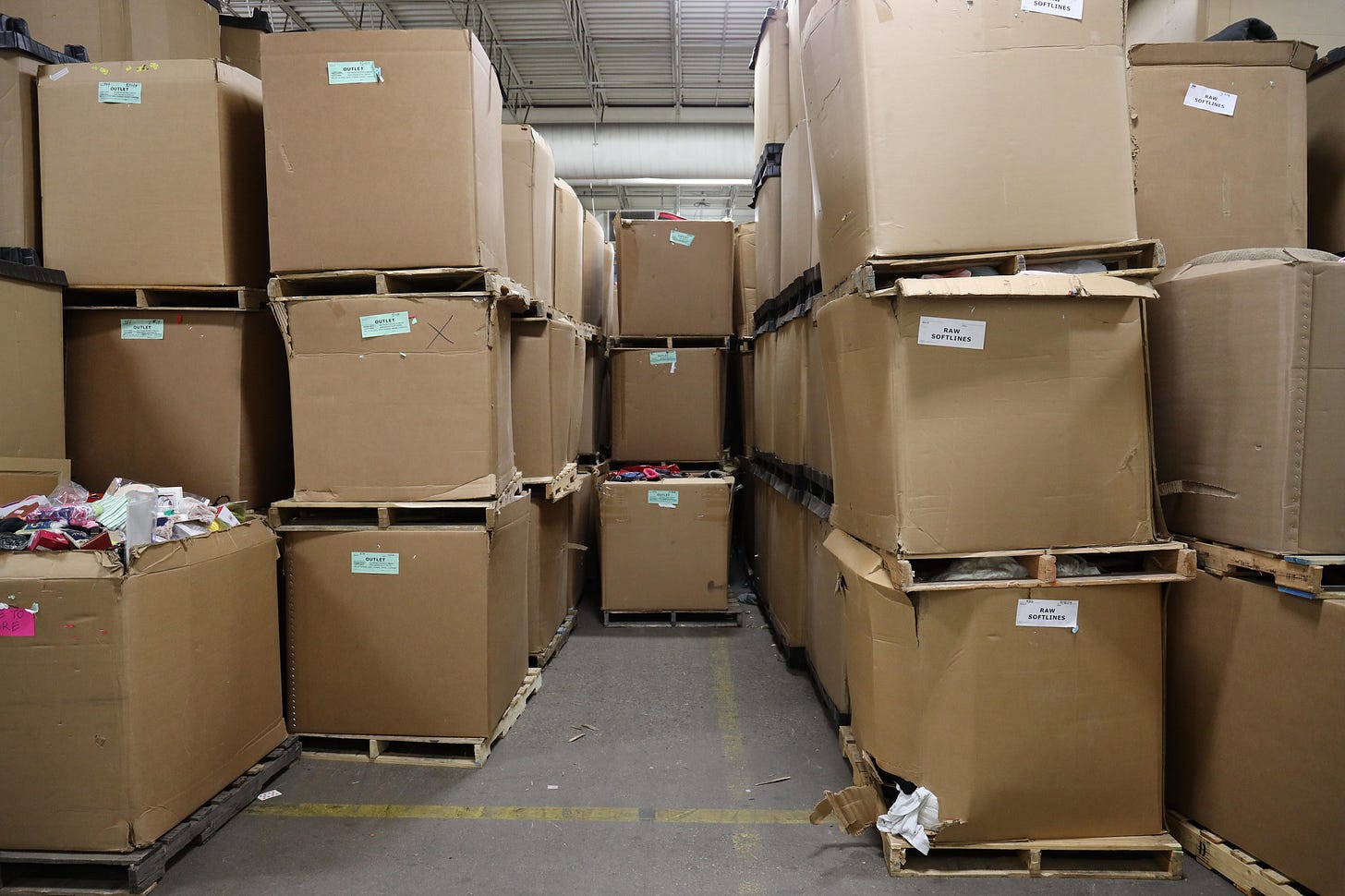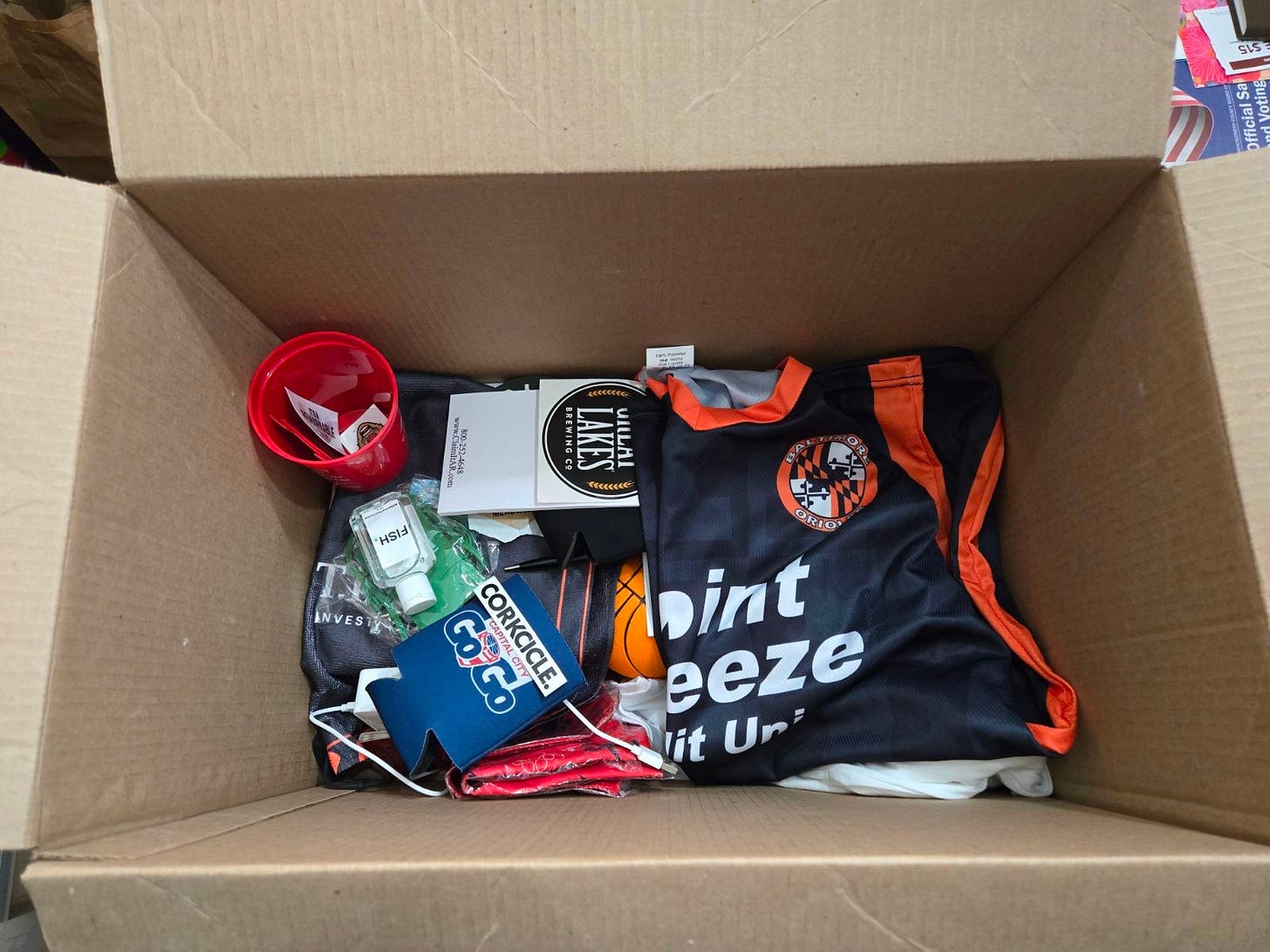
My friend, Dane, has a pretty funny tradition. Every year, he collects all the random stuff he gets at giveaways and gives them to his uncle as a gag gift for Christmas.
It’s November, so Dane now has a box of free stuff he’s accumulated over the year, filled with things like t-shirts, towels, koozies, pens, cups, bags, stickers, magnets, bobbleheads, water bottles, fidget spinners, rubber balls, and more. In other words, he has a box of junk.
But Dane’s box is much more than a timestamp of his year of giveaways: It’s a sign of wasteful consumerism, a box literally overflowing with junk that will soon be trashed.
Pointing out mass consumerism and wasteful habits, especially in the Western World, is hardly original. As outlined in this UNICEF report:
If everybody in the world consumed resources at the rate of people in the European Union, we would need over three Earths.
If everyone consumed at the rate of Canadians or Americans, we would need at least five Earths.
But Dane’s box demonstrates something concrete that an abstract number like “five Earths” doesn't. Everything in the box — from the t-shirt that doesn't fit to the pen that doesn’t write — is the inevitable byproduct of what Annie Leonard, founder of The Story of Stuff Project, calls the “take-make-waste economic growth machine”:
“[Economic growth] implies an increase in the amount of natural resources extracted from the earth, run through the economy, turned into products, and returned back to the earth as waste. Put simply, this means more. More Stuff. More money. Just like it sounds, growth means getting bigger.”
The problem with this model, as Leonard points out, is that we live on a planet with limited resources: Globally, we’ve lost a third of our forests since the ice age; and in the U.S., half our waterways are too dirty for swimming, let alone fishing or drinking.
Of course, one box of junk hardly encapsulates the scope of the problem. Wasteful consumerism is encompassed in everything from outdated fashion to planned obsolescence to the latest water bottle craze — all cleverly advertised through targeted marketing campaigns.
But the box is a good place to start. Because unlike trying to single-handedly transform an economic system, it’s entirely doable to stop giving away and taking worthless junk at every game, conference, convention, market, or event we attend throughout a year.
To eliminate such behavior, we should remember two things:
First, we have to choose our battles. Attacks on overconsumption are not all-or-nothing affairs. Many possessions, which are admittedly a byproduct of consumer culture, improve our quality of life or bring joy: Freebies are not the same as a good book or record that makes us happy.
And second, this is a cultural problem. At some point, we learned to accept freebies as inevitable parts of games or events. But it’s time to question that behavior. In this context, I often think about the history of littering.
Not that littering was ever encouraged, but some time in the last 50 years, littering became antisocial behavior.
Tossing garbage out a car window became not only illegal — it became morally repugnant.
The stuff that ends up in Dane’s box — which may stay with him a couple hours, days, or weeks, before ultimately landing in a dump — should be treated as what it is: junk. And such junk shouldn’t exist, much less be given away for free.


